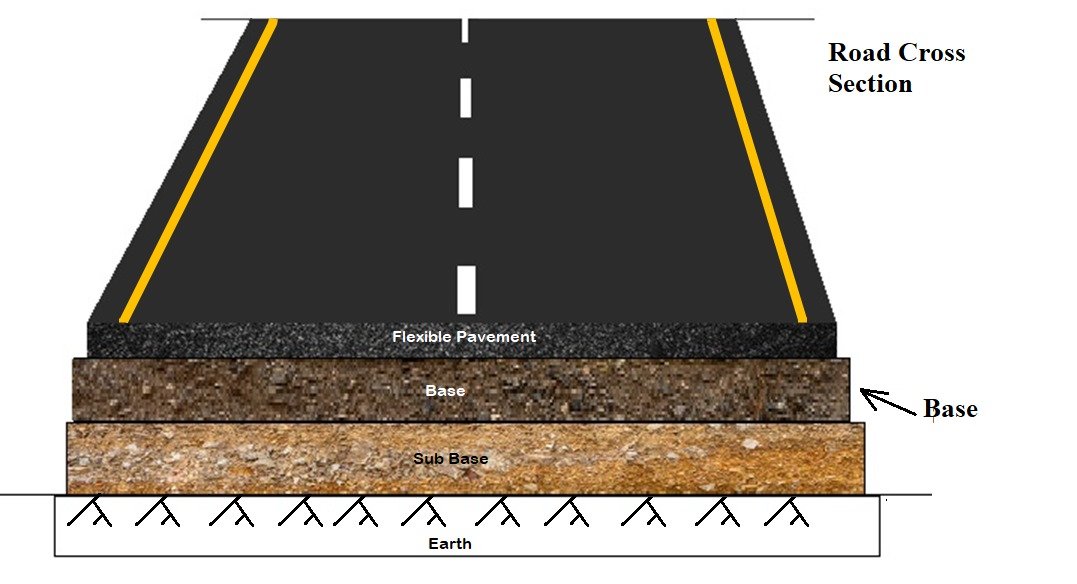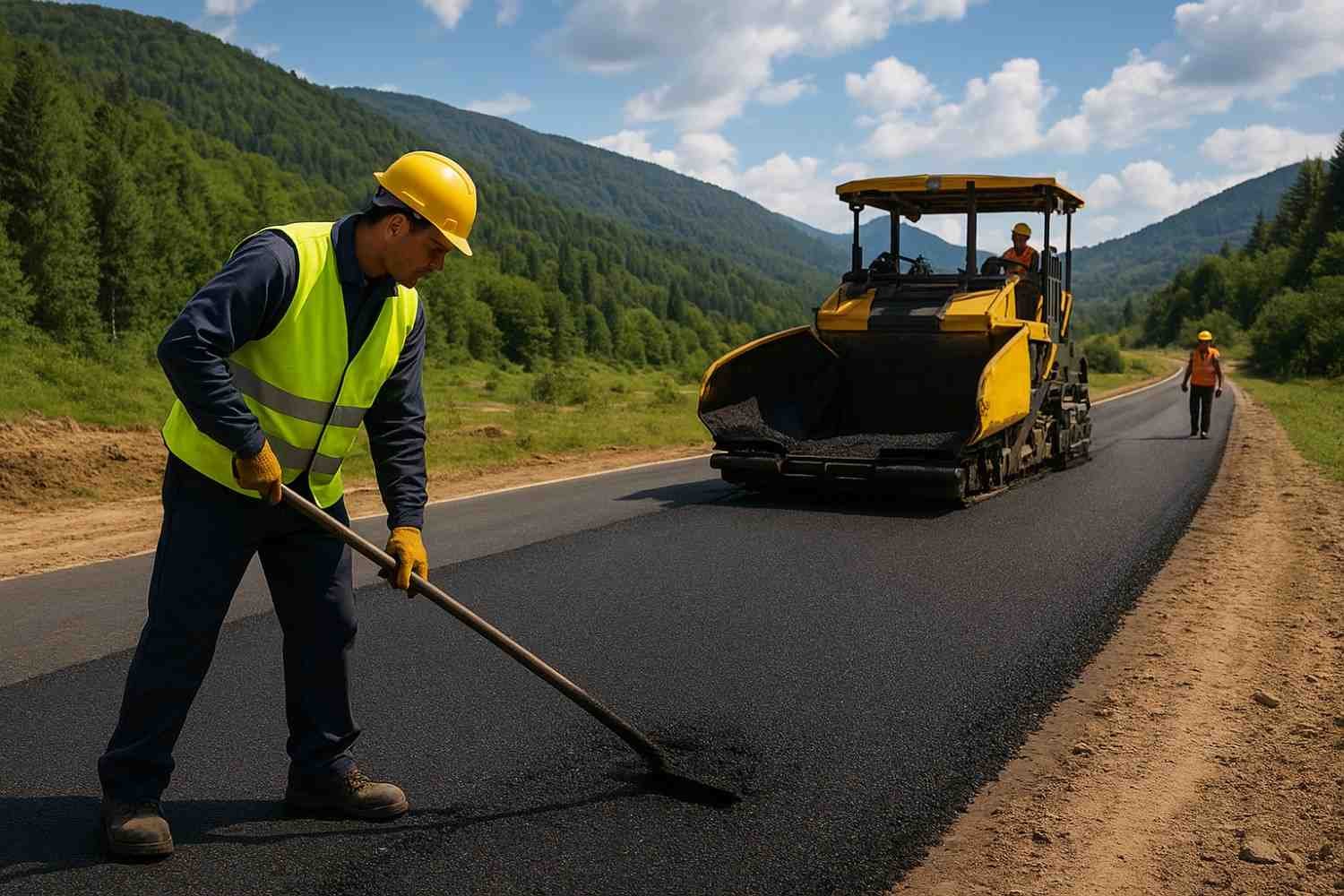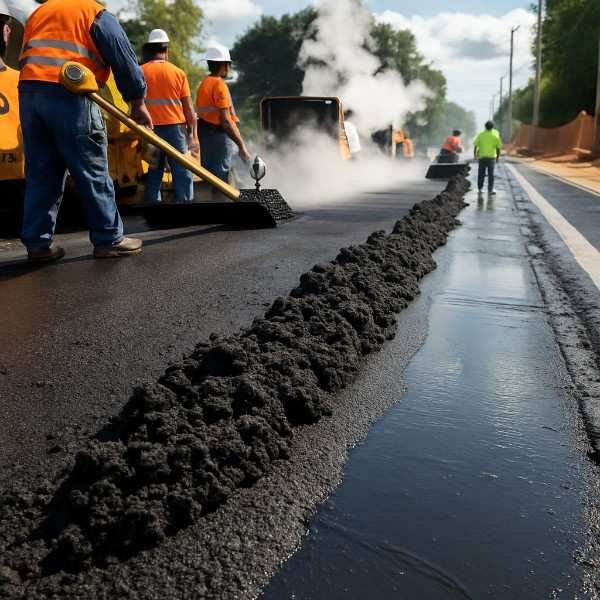Table of Contents
Introduction
Base course construction has two types Aggregate Base Course & Water Bound Macadam (WBM) Base and it is a layer of material placed on the compacted subbase and beneath the wearing course (i.e. rigid or flexible payment). This is very important layer and any issues regarding road leveling should be resolved upto this layer.
Aggregate Base Course (ABC)
Aggregate Base Course is a foundation course, consisting of crushed hard durable gravel, rock or stone fragments. It shall be clean and free from organic matters, lumps of clay and other deleterious substances. The material shall be of such a nature that it can be compacted readily under watering and rolling to form a firm, stable base for both Flexible and Rigid pavements.

Material for Aggregate Base Course
The material shall be well graded such that Coefficient of Uniformity, Cu = D60 / D10 shall be greater than 4 and gradation curve shall be smooth and within the limits for Grading A or B.

Quality Requirements of Aggregate Base Course
Aggregate Base Course shall comply with following Quality requirements:

Filler for Aggregate Base Course
Filler for blending or addition to that already present in the Aggregate Base material shall conform the following requirements:

Construction Requirement for Aggregate Base Course
- Layer thickness should be 15 cm (Max).
- Field Compaction as per AASHTO T-180 (Method D) should be 100% (Min).
- Tolerance for Layer Thickness: -10 mm to +50 mm and Cross Fall ± 0.2%.
Water Bound Macadam (WBM) Base
Water Bound Macadam (WBM) Base consists of broken stones of irregular shape, keyed together by consolidation under a roller, the stones themselves being wedged together in position and prevented from moving by smaller stones. Water is used to wash smaller particles of stones and grit into voids from above. Stability of WBM depends upon binder material which holds the stones in position and prevents their being moved or displaced under traffic.

Water Bound Macadam (WBM) Base Material
Water Bound Macadam (WBM) Base material consists on course aggregate and fine aggregate of specific grading and qualities.
Coarse Aggregate
For water bound macadam base course aggregate should have 15% (Max) Flakiness Index (F.I.), 45% (Max) Los Angeles Abrasion Value and Loss as per Soundness Test when subjected to 5 cycles of Na2 S04 20% (Max) tested as per AASHTO T-104.
| Sieve Designation | Percent Passing by Weight | |||
|---|---|---|---|---|
| mm | In | Class-A | Class-B | Class-C |
| 102 | 4 | 100 | - | - |
| 89 | 3-1/2 | 90-100 | - | - |
| 76 | 3 | - | 100 | - |
| 63.5 | 2-1/2 | 25-60 | 90-100 | 100 |
| 50 | 2 | - | 25-75 | 90-100 |
| 37.5 | 1-1/2 | 0-15 | 0-15 | 35-70 |
| 25 | 1 | - | - | 0-15 |
| 19 | 3/4 | 0-5 | 0-5 | 0-5 |
| 12.5 | 1/2 | - | - | - |
Fine Aggregate
The Fine aggregate (Filler Material or Screening) shall be of gradation in below mentioned table. The material passing Sieve #40 shall have a Liquid Limit (LL) of not more than 25 and Plasticity Index (PI) of not more than 6.
| Sieve Designation | Percent Passing by Weight | |
|---|---|---|
| mm | In | Percent |
| 9.5 | 3/8 | 100 |
| 4.75 | No. 4 | 85-100 |
| 0.15 | No. 100 | 10-30 |
Construction Requirement for WBM Base
- For existing road surface 50 mm x 50 mm furrows shall be cut at One meter (1M) interval at 45o to the centerline of the roadway before proceeding with the laying of Coarse aggregate.
- Use approved hard, tough and durable stone.
- Road metal to be graded, produced from broken or crushed quarried stone or large boulders, least dimension not less than 150 mm.
- The completed Base course shall be maintained in an acceptable condition until necessary subsequent treatment is applied.
Spreading and Compaction of WBM Base
- Crushed stone shall be deposited and spread over prepared surface to proper depth so that the compacted layer shall not exc 2 ½ times the thickness of Max Size of Aggregate. Each layer shall be inspected thoroughly before rolling to detect high or low spots. Crushed stones shall be added or shifted to provide a true surface. The coarse aggregate layer, after being laid to proper thickness, shall be lightly rolled, sufficient only to establish the required grade and level of the stones.
- Lay to gradient, camber and super-elevation as required and dry roll, filling the depressions which may appear during rolling. Spreading of aggregate shall be followed by rolling with a smooth wheel roller weighing 10 Tons. Rolling shall begin at the lower edge of the shoulders to lock the stones firmly at the edge, then progress gradually towards centre line. Rolling shall continue until aggregate is well keyed and does not creep ahead of the roller.
- After the initial rolling, dry screening shall be applied uniformly over the surface. Dry rolling shall be continued while screenings are being applied. The surface shall be swept with mechanical or hand brooms to aid spreading of the screenings. In no case, shall coarse aggregates be stored in heaps directly on the area where these are to be laid nor shall their hauling over a partly completed base be permitted, however dumpers shall be allowed at the construction area, where material will be spread quickly after dumping.
- When the interstices in the coarse aggregate are filled with screening, the surface shall be sprinkled with water until it is saturated. The rolling, sprinkling and application of additional screening shall continue until a grout is formed that fills all the voids and forms a wave of grout in front of the roller.
- When more than one layer is required to complete the Macadam Base course to the thickness as per the drawings, each layer shall be constructed as described.






